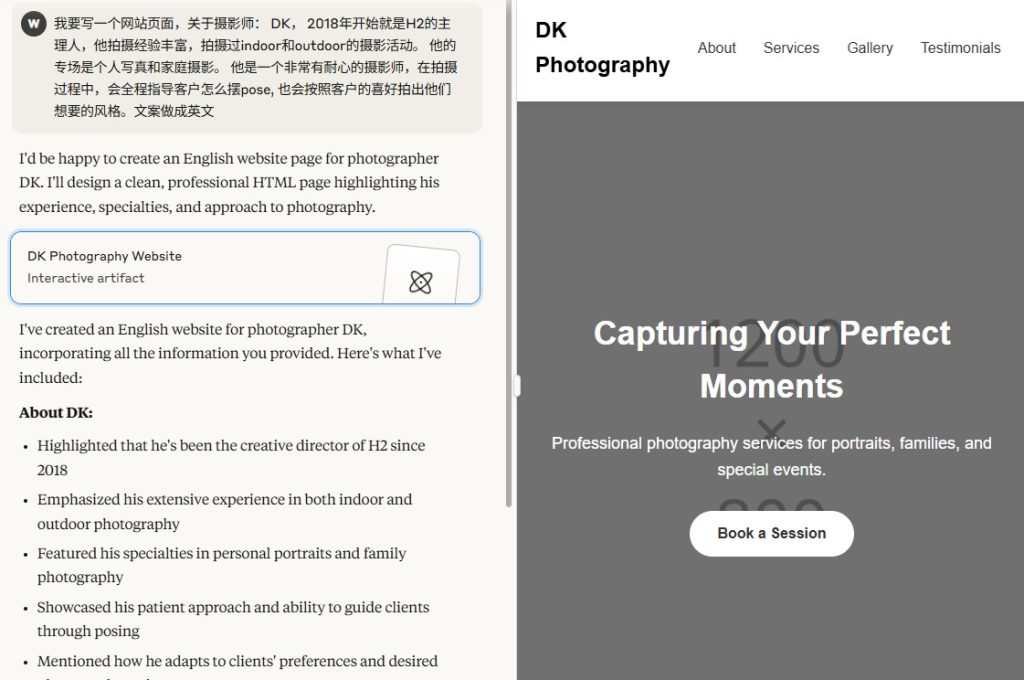In the ever-evolving landscape of digital marketing, the intersection between social media and search engine optimization (SEO) in Singapore continues to captivate marketers and businesses alike. While it’s widely understood that social media doesn’t directly dictate SEO rankings, its influence on various facets indirectly shapes the online visibility and performance of websites.
Understanding and harnessing this dynamic relationship can unlock powerful strategies for enhancing your online presence and achieving your business objectives. In this blog, we delve into the intricate connection between social media and SEO, offering actionable tips for seamless integration that maximizes your digital impact.
Ways for Seamless Social Media and SEO Integration
Here are some tips that might help you better understand how social media and SEO integration can produce better, more synergistic results:
1. Optimise your Social Media for SEO Integration
- Use relevant keywords: Incorporate relevant keywords in your profile bio, description, and posts to improve search visibility.
- Complete your profile: Fill out all the necessary information on your social profiles, including your profile picture, cover photo, bio, and contact details.
- Use consistent branding: Maintain consistent branding across all your social profiles, like Facebook, Instagram, LinkedIn or Xiao Hong Shu, to create a cohesive online presence.
- Engage with your audience: Regularly engage with your followers by responding to comments, messages, and mentions to boost engagement and visibility.
- Share quality content: Post high-quality and relevant content that resonates with your audience to increase engagement and attract more followers.
2. Create Valuable and Shareable Social Media Content
- Know your audience: Understand your target audience’s interests, preferences, and pain points to create content that resonates with them.
- Provide value: Offer informative, entertaining, or inspiring content that adds value to your audience’s lives. This could be in the form of tips, how-to guides, industry insights, or inspirational quotes.
- Use visuals: Incorporate eye-catching visuals such as images, videos, infographics, and GIFs to make your content more engaging and shareable.
- Tell a story: Share stories that evoke emotions and connect with your audience on a personal level. People are more likely to share content that they can relate to.
- Encourage engagement: Pose questions, run polls, or ask for opinions to encourage your audience to interact with your content. Engagement can lead to more shares and increased reach.
- Stay consistent: Maintain a consistent posting schedule and tone of voice to build brand recognition and trust with your audience.
3. Incorporate Targeted Keywords and Hashtags for Effective SEO Integration
- Research keywords: Use tools like Google Keyword Planner or SEMrush to identify relevant keywords that your target audience is searching for. Incorporate these keywords naturally into your social media posts, bio, and descriptions.
- Use hashtags strategically: Research popular and relevant hashtags in your industry or niche. Use a mix of broad and specific hashtags to reach a wider audience while targeting your niche. Avoid using too many hashtags in a single post, as it can come across as spammy.
- Create branded hashtags: Develop unique hashtags that represent your brand or campaign. Encourage your audience to use these hashtags when engaging with your content to increase brand visibility and user-generated content.
- Monitor performance: Track the performance of your keywords and hashtags using social media analytics tools. Identify which keywords and hashtags are driving engagement and adjust your strategy accordingly.
- Stay relevant: Keep up with trending topics and conversations in your industry to identify relevant keywords and hashtags to incorporate into your content. This will help you stay current and increase the visibility of your posts.
4. Engage with Influencers and Industry Leaders
- Research and identify relevant influencers for seamless SEO integration: Start by researching influencers and industry leaders in your niche or industry. Look for individuals who align with your brand values and have a significant following.
- Build genuine relationships: Engage with influencers by liking, commenting, and sharing their content on social media. Show genuine interest in their work and contributions to the industry.
- Offer value: Provide influencers with valuable content, insights, or resources that can benefit their audience. Collaborate on projects, guest posts, or events that showcase your expertise and add value to their followers.
- Personalize your outreach: When reaching out to influencers, personalize your messages and show that you have done your research. Highlight why you admire their work and how you can collaborate to mutual benefit.
- Attend industry events and conferences: Networking events and industry conferences are great opportunities to connect with influencers and industry leaders in person. Engaging in meaningful conversations and exchanging contact information for future collaborations can help your business grow in a particular industry, be it healthcare, real estate or financial.
- Leverage social media platforms: Use social media platforms to engage with influencers through direct messages, mentions, and tags. Share their content and participate in conversations to build rapport and establish a relationship.
- Be patient and persistent: Building lasting relationships with influencers requires patience and persistence. Continuously demonstrate your commitment to adding value and providing support, even as you navigate the complexities of influencer engagement and integration into your SEO strategy.
5. Leverage Social Media Advertising
- Set clear goals: Define your online advertising objectives, whether it’s increasing brand awareness, driving website traffic, generating leads, or boosting sales. Having clear goals will help you create targeted campaigns.
- Know your audience: Understand your target audience’s demographics, interests, and behaviours to create ads that resonate with them. Use social media analytics tools to gather insights and tailor your messaging accordingly.
- Choose the right platform: Select the social media platforms where your target audience is most active. Each platform has unique features and audience demographics, so choose the ones that align with your goals.
- Create compelling content: Develop visually appealing and engaging ad creatives that capture attention and communicate your message effectively. Use high-quality images, videos, and copy that align with your brand voice for seamless SEO integration.
- Use targeting options: Take advantage of social media advertising targeting options to reach specific audiences based on demographics, interests, behaviours, and more. Refine your targeting to ensure your ads are seen by the right people.
- Test and optimize: A/B test different ad creatives, copy, and targeting options to identify what resonates best with your audience. Monitor your ad performance regularly and make necessary adjustments to optimize your campaigns for better results.
- Set a budget and schedule: Determine your advertising budget and schedule to ensure you allocate resources effectively. Monitor your ad spending and performance to make data-driven decisions for future campaigns.
- Track and measure results: Use social media analytics tools to track key performance metrics such as click-through rates, conversions, and return on ad spend. Analyse the data to understand what’s working and make informed decisions for future campaigns.
6. Share and Promote Your Blog Content on Social Media
- Create a social media content calendar: Plan before time and schedule posts to promote your blog content on various social media platforms. Consistency is key to maintaining engagement with your audience.
- Customize your posts for each platform: Tailor your messaging and visuals to fit the tone and style of each social media platform. Use hashtags, mentions, and relevant keywords to increase visibility and reach.
- Share snippets and teasers: Create engaging snippets or teasers of your blog content to pique interest and encourage followers to click through to your blog. Use compelling visuals and intriguing captions to entice your audience.
- Utilize multimedia content: Incorporate a mix of multimedia content such as images, videos, infographics, and GIFs to make your posts more visually appealing and shareable.
- Engage with your audience: Respond to comments, messages, and mentions from your followers to foster a sense of community and build relationships. Encourage discussions and feedback to increase engagement.
- Collaborate with influencers and other bloggers: Partner with influencers or other bloggers in your niche to amplify your reach and promote your blog content to a wider audience. Cross-promotion can help you with your SEO integration by gaining exposure and attracting new followers.
- Utilize social media advertising: Consider using paid social media advertising to boost the visibility of your blog content. Target specific audiences based on demographics, interests, and behaviours to maximize the impact of your ads.
- Monitor and analyse performance: Track the performance of your social media posts using analytics tools to understand what content resonates with your audience. Use this data to optimize your social media strategy and improve engagement over time.
Conclusion
In conclusion, the symbiotic relationship between social media and SEO underscores the importance of integrating these two powerful tools into your digital marketing arsenal. While each has its distinct advantages, their combined impact can significantly amplify your online presence and drive tangible results. From enhancing brand visibility to increasing website traffic and engagement, aligning your social media strategies with SEO best practices is crucial for achieving your online goals. For individuals and businesses alike, the tips outlined in this article serve as a valuable roadmap for effective integration.
However, navigating the complexities of digital marketing requires expertise and dedication. This is where a reputable digital marketing company can play a pivotal role. By leveraging their specialized knowledge and resources, such agencies can help streamline your social media and SEO integration efforts, ensuring synergy and maximizing your digital impact. Whether it’s devising comprehensive strategies, implementing tactics, or providing ongoing support and analysis, partnering with a digital marketing company in Singapore can empower you to achieve meaningful and measurable results in the ever-evolving online landscape.








